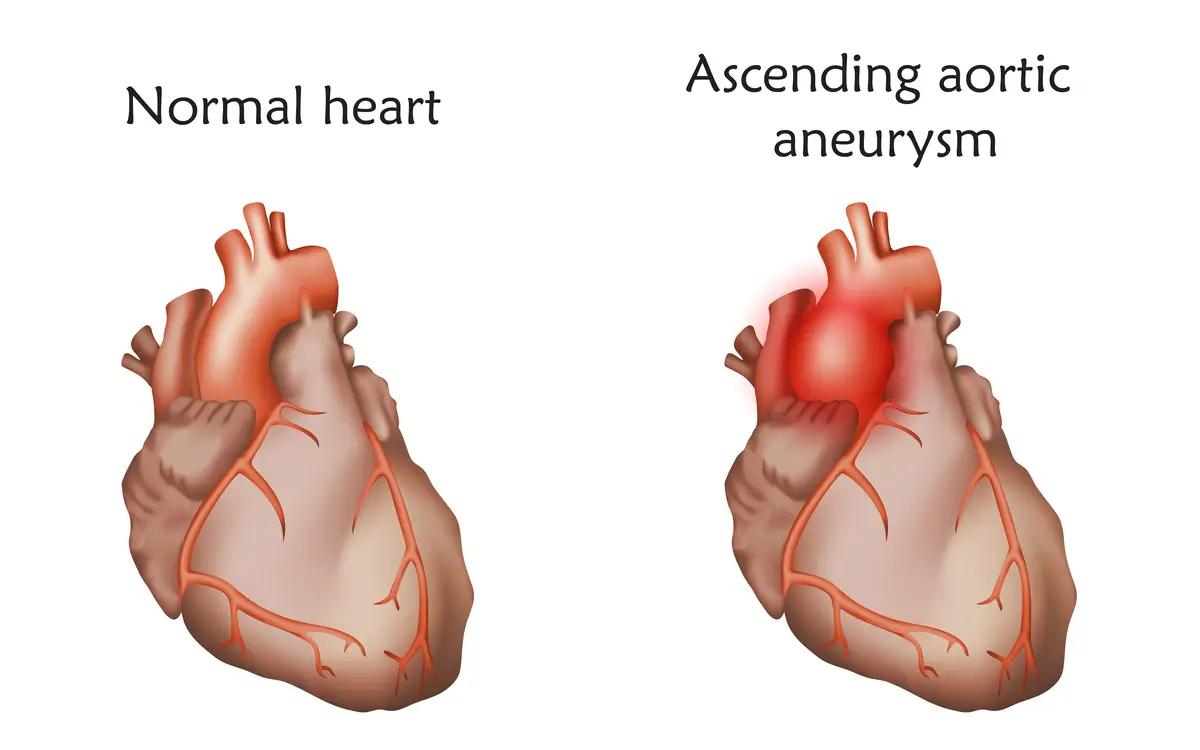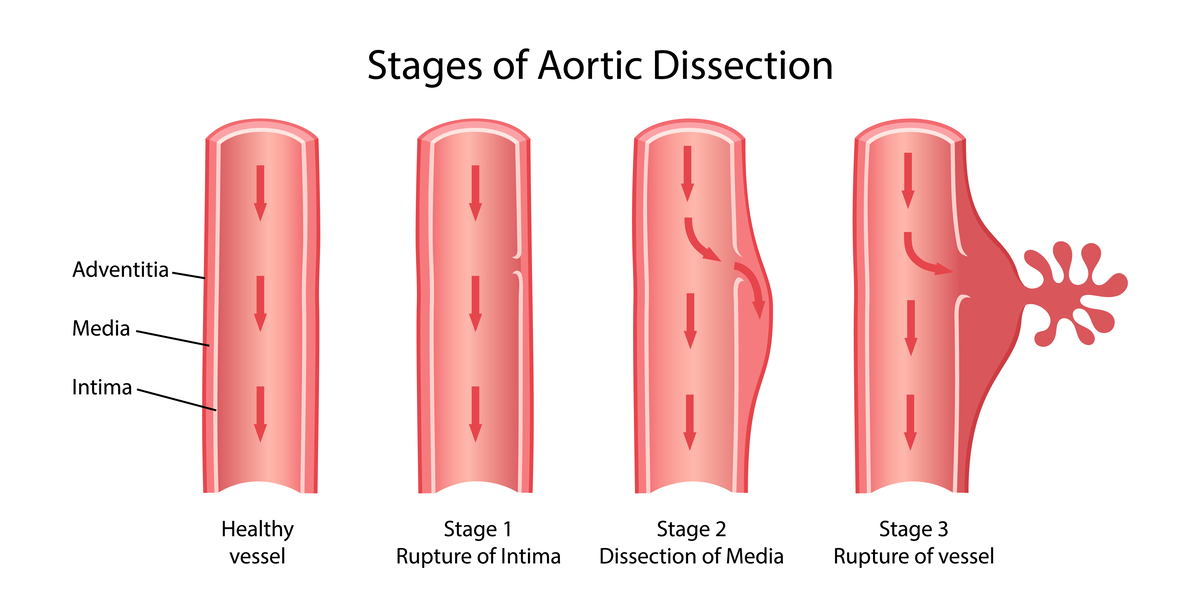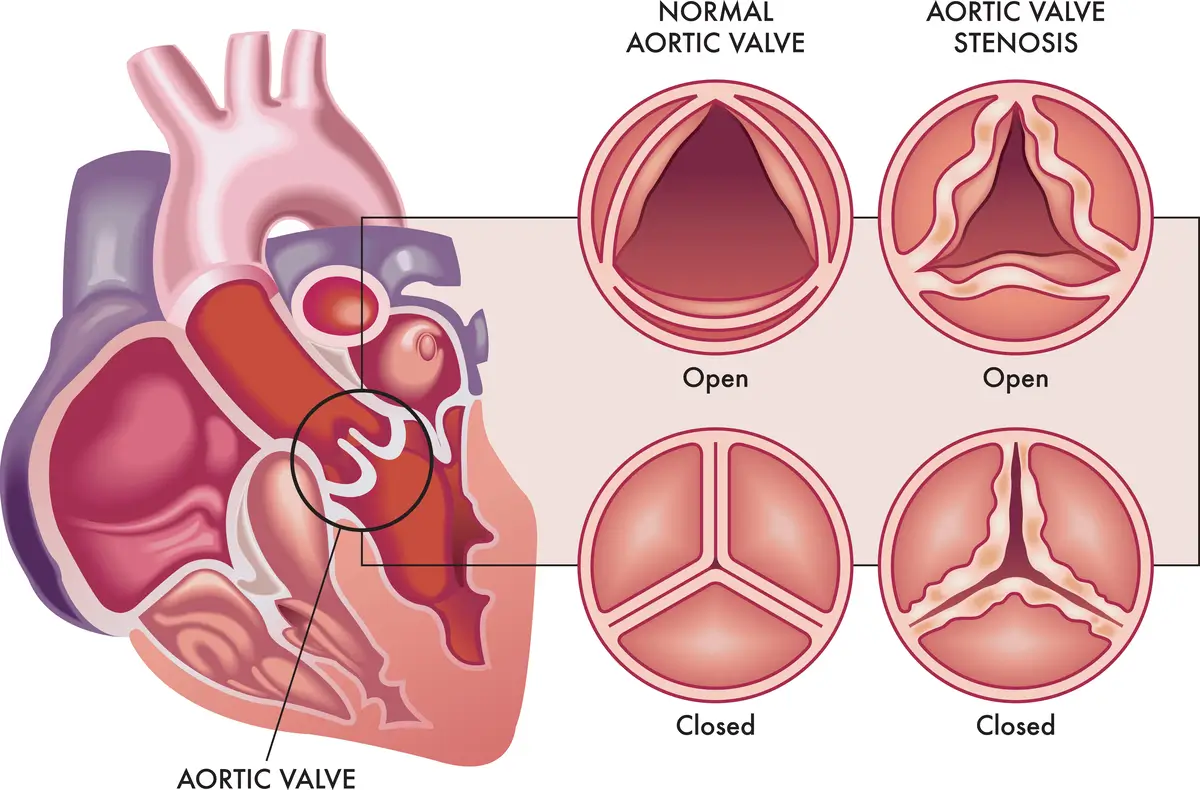Aortic Disease: Causes, Symptoms, and Treatment Options
Aortic disease encompasses a variety of conditions affecting the aorta, the body's largest artery. This artery plays a crucial role in the cardiovascular system, carrying oxygen-rich blood from the heart to the rest of the body. Given its vital function, any disease affecting the aorta can have serious, potentially life-threatening consequences. This comprehensive guide delves into the types, causes, symptoms, diagnostic procedures, treatment options, and prevention strategies for aortic disease, aiming to empower readers with the knowledge to manage their heart health proactively. It covers conditions such as ascending aorta aneurysm, abdominal aorta aneurysm, and bicuspid aortic valve disease.
What Is Aortic Disease
Aortic disease encompasses a group of conditions affecting the aorta, the main artery in the human body. The aorta originates from the left ventricle of the heart, arches upwards, and then descends through the chest and abdomen, delivering oxygen-rich blood to the rest of the body. Aortic diseases can significantly impact this vital blood flow, leading to life-threatening complications if not properly managed. These conditions primarily involve the aorta's structure and function, including its walls and the flow of blood through it. Cardiology, the branch of medicine specialising in heart disorders, plays a crucial role in diagnosing and treating various aortic diseases.
Types of Aortic Disease
The main types of aortic disease include:

An aortic aneurysm occurs when a segment of the aorta weakens and enlarges, with common sites being the abdominal (AAA) or thoracic (TAA) areas. Despite often developing without noticeable symptoms, individuals may experience deep, constant pain in the abdomen, chest, or back as the aneurysm progresses. Causes include factors like atherosclerosis and genetic predisposition, while risk factors encompass age, smoking, high blood pressure, family history, and gender. Males over 60 are particularly susceptible. The primary danger lies in the risk of rupture, leading to life-threatening internal bleeding. Regular check-ups and awareness of risk factors are crucial for early detection and management of aortic aneurysms.
Abdominal Aortic Aneurysm (AAA)
.webp)
An abdominal aortic aneurysm (AAA) is a bulge or swelling in the aorta, the main blood vessel that runs from the heart down through the chest and abdomen. The aorta is typically a strong and elastic vessel, but certain factors can weaken its walls, causing them to bulge outwards. AAA is often asymptomatic, meaning people may not realize they have it until it becomes large or ruptures, which can be life-threatening. AAA is more common in men and in older adults, particularly those with a history of smoking, high blood pressure, or atherosclerosis (hardening of the arteries). Understanding the symptoms and causes is crucial for early detection and management of this condition, which can occur in different parts of the aorta.
Thoracic Aortic Aneurysm (TAA)
.webp)
A thoracic aortic aneurysm (TAA) is a bulge or enlargement in the aorta that occurs in the chest area. The aorta is the largest artery in the body and carries oxygen-rich blood from the heart to the rest of the body. When an aneurysm develops in the thoracic area, it can weaken the aortic wall and lead to a potentially life-threatening situation if the aneurysm ruptures.
Similar to AAA, thoracic aortic aneurysms often do not cause symptoms until they become large or ruptured. Risk factors for developing a TAA include atherosclerosis (hardening of the arteries), high blood pressure, genetic factors, and certain connective tissue disorders.
Aortic Dissection

Aortic dissection is a serious condition characterised by a tear in the inner layer of the aorta's wall. This tear allows blood to flow between the layers of the wall, causing them to separate (dissect). Aortic dissection can lead to aortic rupture or decreased blood flow (ischemia) to organs, which can be fatal if not treated promptly.
Aortic Stenosis and Aortic Regurgitation

These conditions involve the aortic valve, a crucial component that regulates blood flow from the heart into the aorta. Aortic valve stenosis, a condition characterised by the narrowing of the aortic valve, restricts the smooth flow of blood, potentially leading to various heart problems and symptoms of heart failure.
A related concern is aortic regurgitation, where the aortic valve leaks, allowing blood to flow back into the heart from the aorta.
Causes and Risk Factors
Aortic disease can be attributed to various factors, including:
- High Blood Pressure: The leading cause of aortic disease, putting extra stress on the artery walls.
- Genetic Disorders: Conditions like Marfan Syndrome and Ehlers-Danlos Syndrome increase the risk.
- Lifestyle Choices: Smoking and unhealthy diet contribute to the development of aortic disease.
Symptoms and Warning Signs
Symptoms vary depending on the type of aortic disease but may include:
- Severe chest pain or back pain
- Difficulty breathing
- A pulsating feeling in the abdomen
Early recognition and medical attention are crucial for effective management.
Diagnostic and Screening Procedures

Diagnosing aortic disease often involves imaging tests such as ultrasound, computed tomography (CT) scan, magnetic resonance imaging (MRI), and echocardiography, which can provide detailed images of the aorta's structure and function. Once diagnosed, the appropriate treatment plan is determined based on the type and severity of the condition. Treatment options may range from the use of medications to manage symptoms and reduce risk factors to surgical interventions such as repairing the affected section of the aorta or employing endovascular procedures like stent placement.
Treatment Options and Management
Treatment varies based on the condition's severity and may include:
- Surgical Interventions: Such as repairing or replacing the affected section of the aorta.
- Minimally Invasive Procedures: Endovascular surgery to place stents inside the aorta.
- Medications: To manage symptoms and reduce risk factors, such as high blood pressure.
Prevention and Lifestyle Changes
Preventive measures for aortic disease focus on controlling risk factors and include maintaining healthy blood pressure, quitting smoking, eating a balanced diet, regular exercise, and regular medical check-ups, especially for individuals with a family history of aortic disease or other risk factors.
Conclusion
Aortic disease poses a significant health risk, but with early detection, effective treatment, and lifestyle modifications, individuals can manage their condition and lead healthy lives. It's essential to be aware of the symptoms and risk factors associated with aortic disease and to consult healthcare providers for regular check-ups and appropriate preventive measures.
Frequently Asked Questions About Aortic Disease
What is the most common cause of aortic aneurysm?
High blood pressure is the most common cause, weakening the artery walls over time.
Can aortic disease be managed without surgery?
Yes, in some cases, especially if detected early. Medications and lifestyle changes can effectively manage the condition.
Are all aortic aneurysms symptomatic?
No, many aneurysms are asymptomatic and are often discovered incidentally during tests for other conditions.
Is aortic disease hereditary?
Certain types of aortic disease, such as those associated with genetic disorders like Marfan Syndrome, can be hereditary.

